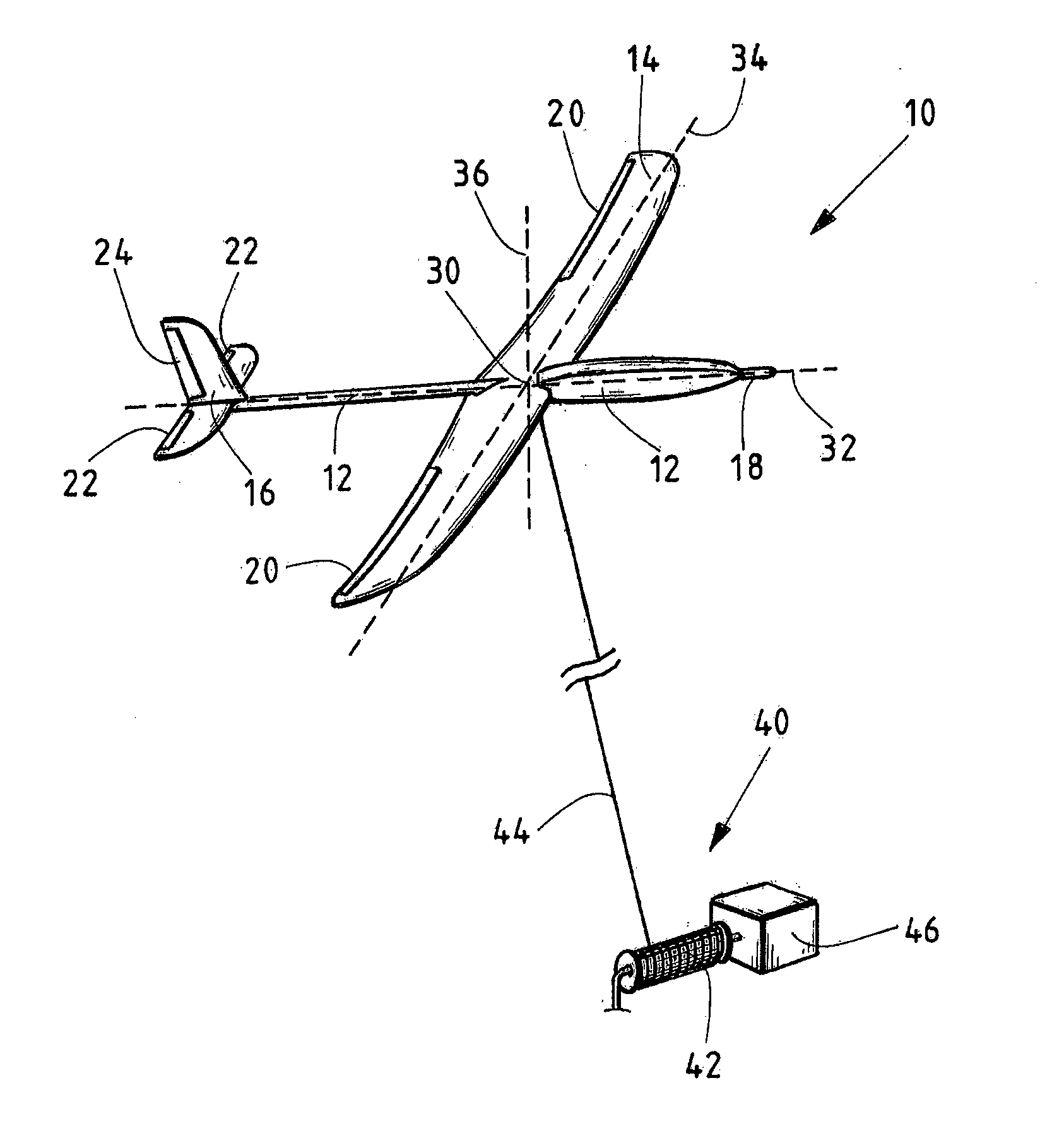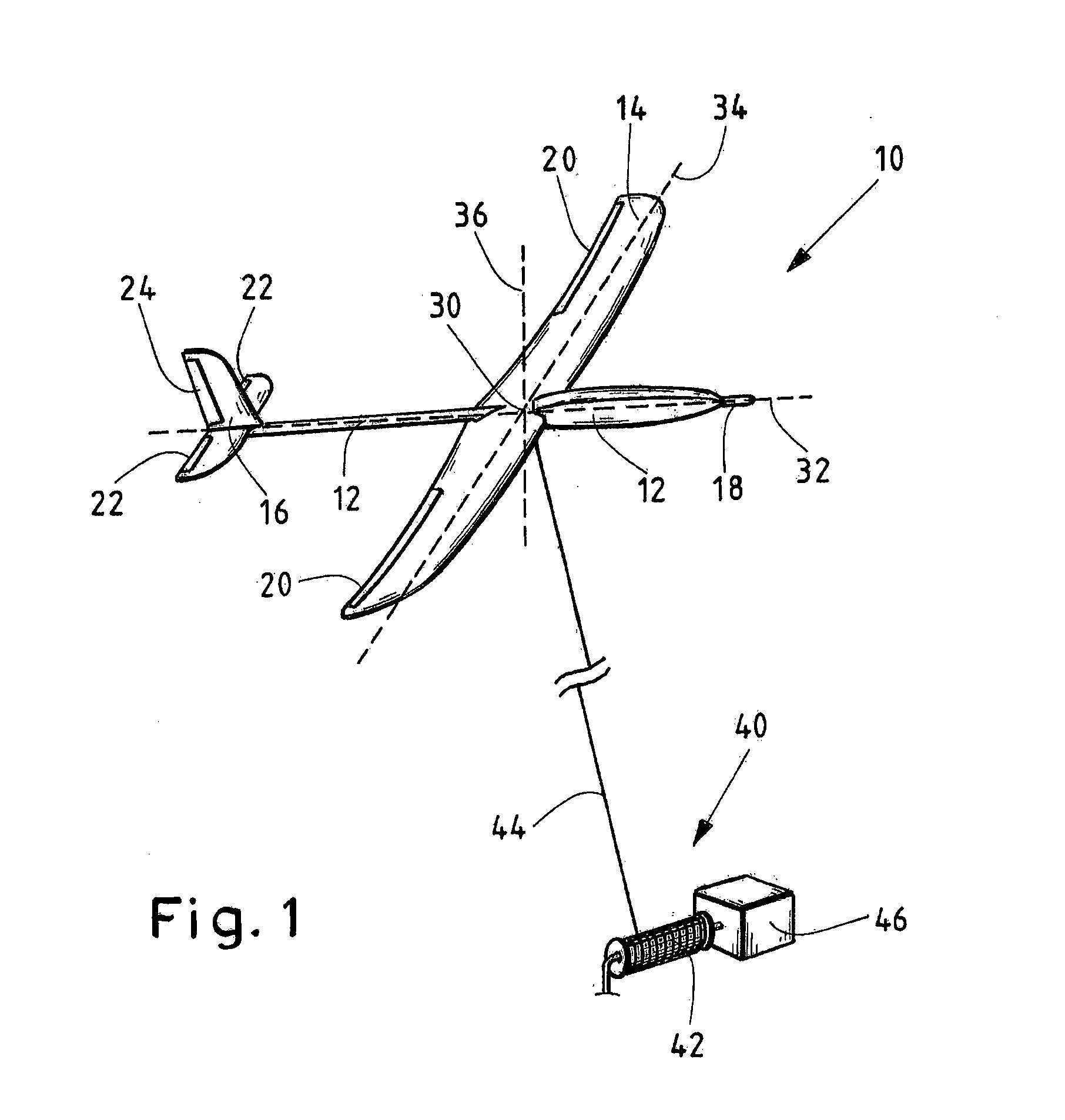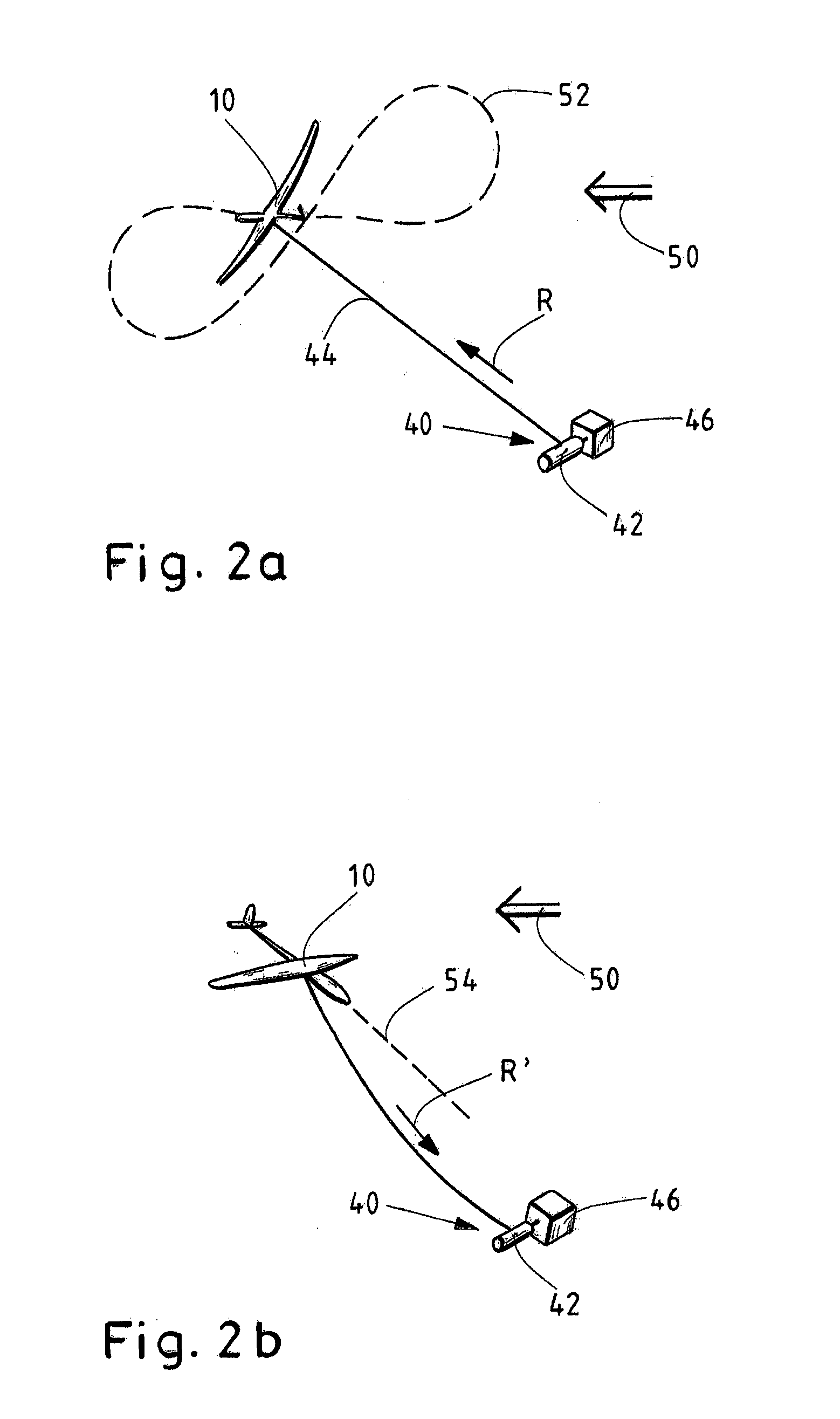System and method for airborne wind energy production
a technology of airborne wind and energy production, applied in the direction of gliders, machines/engines, transportation and packaging, etc., can solve the problems of large dead time of methods and relatively poor integrated energy yield, and achieve the highest lift force, the effect of reducing the number of turbines and increasing the energy yield
- Summary
- Abstract
- Description
- Claims
- Application Information
AI Technical Summary
Benefits of technology
Problems solved by technology
Method used
Image
Examples
Embodiment Construction
[0050]In the drawings, the same or similar types of elements or respectively corresponding parts are provided with the same reference numbers in order to prevent the elements from needing to be reintroduced.
[0051]FIG. 1 shows an exemplary embodiment of a system for electric power production from wind according to the invention.
[0052]The airborne or potentially airborne part of the system comprises a glider 10, which in the embodiment depicted in FIG. 1 is designed to be a fixed wing aircraft. The glider 10 comprises a fuselage 12, a main wing 14, a tailplane 16 and control surfaces 20, 22, 24. Also shown are the longitudinal axis 32, the lateral axis 34 and the vertical axis 36, which meet at the centre of gravity 30 of the glider and which constitute the intrinsic coordinate system of the glider.
[0053]In the example shown, the fuselage 12 comprises a tube constructed from fiber reinforced composite material as mechanical backbone between the main wing 14 and the tailplane 16 and a ...
PUM
 Login to View More
Login to View More Abstract
Description
Claims
Application Information
 Login to View More
Login to View More - R&D
- Intellectual Property
- Life Sciences
- Materials
- Tech Scout
- Unparalleled Data Quality
- Higher Quality Content
- 60% Fewer Hallucinations
Browse by: Latest US Patents, China's latest patents, Technical Efficacy Thesaurus, Application Domain, Technology Topic, Popular Technical Reports.
© 2025 PatSnap. All rights reserved.Legal|Privacy policy|Modern Slavery Act Transparency Statement|Sitemap|About US| Contact US: help@patsnap.com



